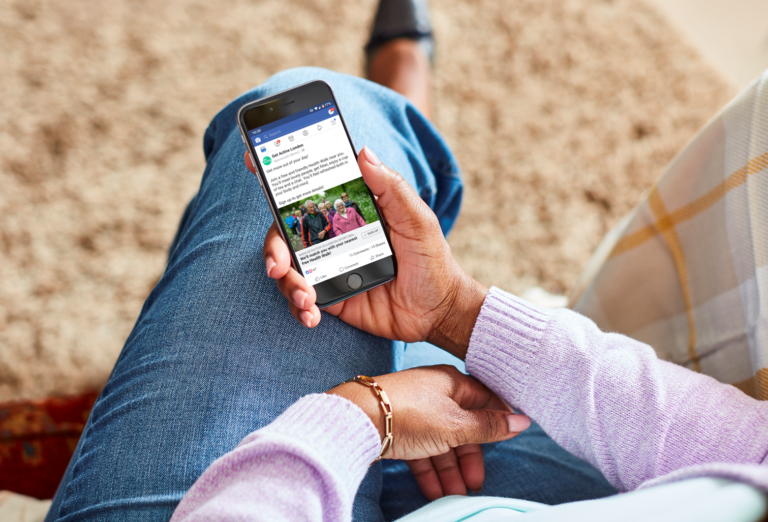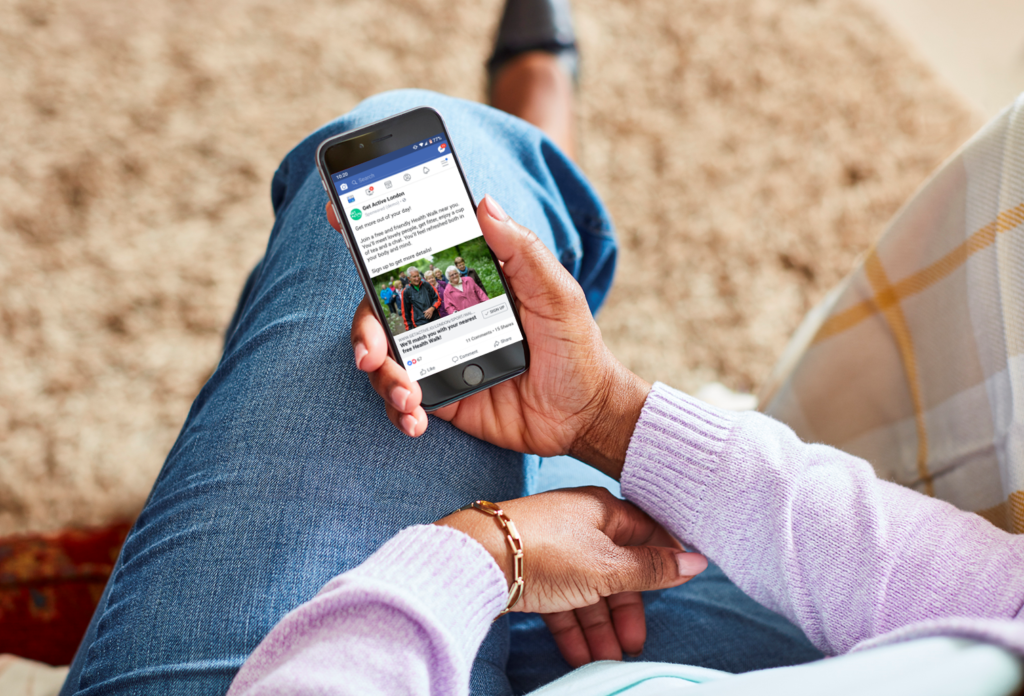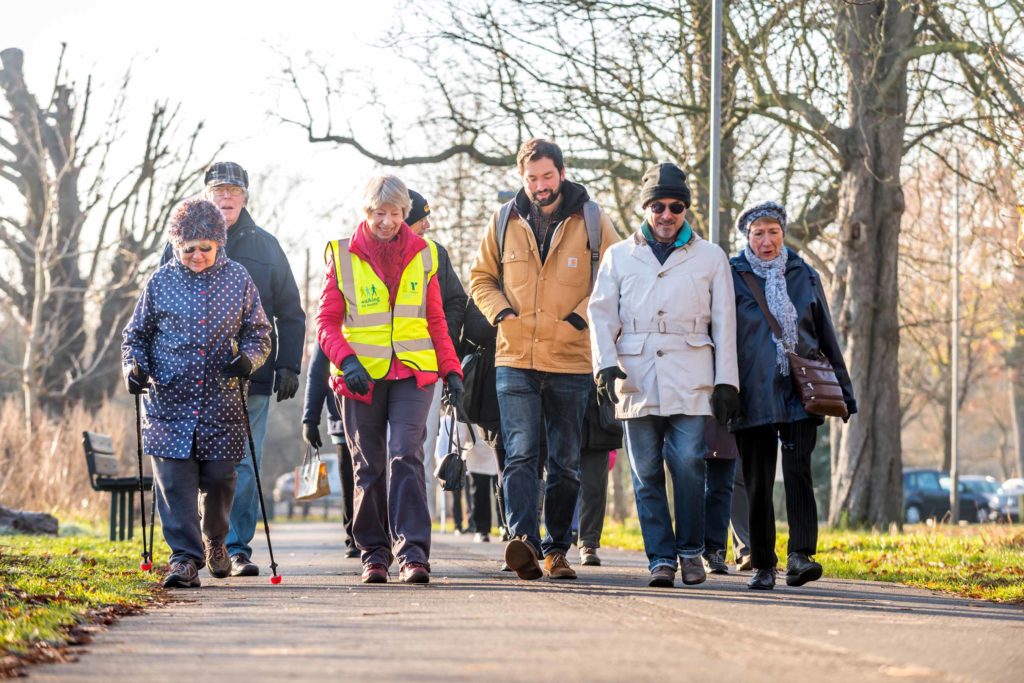We are working with Walking for Health and ten boroughs to test Facebook advertising for local walking groups to see if digital marketing can help less active people get into walking.
Here, our Digital Marketing Lead, Chris Norfield begins to share some of what we have already learned from the pilot with the aim of making it simpler and easier for partners to use digital marketing to effectively promote activity sessions.
Did you know that the average Facebook user visits the site eight times a day, spending a total of 58 minutes on the site?
58 minutes is a huge chunk of our waking day. It’s nearly as much time as we spend eating and drinking (67 minuntes on average) and much more than the combined time spent reading, socialising or being active (40 minutes on average). Source: Similarweb.com.
Despite what you might have heard, it’s user base is continuing to grow, and it is still the social media platform with the largest and broadest audience. 77% of UK adults use Facebook every week. Even for the 50+ audience; 70% are online every day and seven million have a Facebook account. Source: PHE Marketing Strategy 2017-
From a marketing point of view this means that whatever audience you are trying to reach, a significant proportion of them are probably on. In a post back in July celebrating National Parks Week, I listed a few of the reasons why we should all be thinking about using Facebook advertising to reach potential participants for sport and physical activity sessions.
Why should we be thinking about using Facebook advertising to reach potential participants?
Facebook Ads are the easiest way to put information about your activity or programme, in front of the eyes of potential participants. Note: I’m specifically talking about paid Facebook ads, rather than posting to your organisation’s Facebook page followers.
Read this post from Make Sport Fun about why it’s probably not worth your time to promote your activities with normal Facebook posts. We’ve seen a few good examples of partners in the sector using Facebook ads (we’ll share some case studies in a future news post).
But when we spoke to local partners they consistently cited the same barriers. They said “we’d like to do some Facebook advertising, but…there is no one in the team with expertise to run a campaign, we don’t have a budget for Facebook ads, or our communications team won’t let us.”
Based on this feedback, we brought several local partners together and took the decision to run a Facebook ad campaign ourselves. We set ourselves the aim of learning what works, what doesn’t work, and shining a light on the exact steps needed to run an effective campaign.
“Over the last 6 months we’ve worked closely with local authorities to understand the barriers to using digital marketing to support people to get active. Local public health and leisure teams told us that they’d like to do more, but lacked the expertise and capacity to properly develop and run their own campaigns.
Based on this feedback we’ve brought several local partners together to trial Facebook advertising campaigns with the aim of learning what works, what doesn’t work and shining a light on the exact steps needed to run an effective campaign.”
Some of the key things we hope to learn and share
- How do you set up Facebook ads that effectively target a less active audience?
- What images, copy and videos work best to motivate them to act?
- What budget do you need and how to allocate it effectively?
The steps of the digital marketing pilot
- We started by identifying a priority audience for the campaign – women aged 55+. This is an audience which is particularly active on Facebook and has a high proportion of less active people within it: 42 per cent of people aged 55 and over are inactive compared to 29 per cent of the adult population. Source: Active People Survey 10, Q2, 2015-16.
2. Next, we identified one specific activity that would be a good match for this audience – free weekly walking groups. We were looking for good quality physical activity opportunities, that we could be confident would be a positive first experience for a less active older person. We partnered with Walking for Health which accredits walking schemes, and this gave us a potential supply of over 200 weekly walks in London to promote.
3. Then we settled on the digital marketing tools we would use – Facebook lead ads + SMS + Email.
4. Finally, we recruited 10 local authorities who all committed a small budget to run the Facebook adverts in their boroughs; Camden, Kensington and Chelsea, Enfield, Harrow, Richmond, Wandsworth, Hackney, Ealing, Sutton and Haringey.
Over the next few months we will be sharing what we learn with the aim of making it simpler and easier for partners to use digital marketing to effectively promote local sport and activity sessions. If you want to find out more about our work in this space, send me an email at [email protected].



